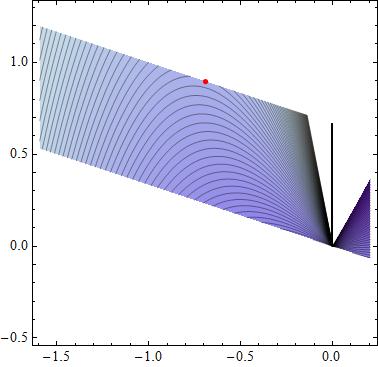How do you minimize and maximize #f(x,y)=x^2-y/x# constrained to #0<x+3y<2#?
2 Answers
The intent may have been to apply derivatives, but the explanation below would seem to provide a simpler solution:
Explanation:
Maximization
Note that the constraint
allows
In which case
Minimization
Note that the constraint
allows
In which case
See below.
Explanation:
Given
We are looking for local minima/maxima.
This problem can be handled using lagrange multipliers. This can be done following the steps:
1) Describe
This can be done introducing the so called slack variables
then
2) Form the Lagrangian
3) Determine the stationary points of
This is done computing the solution to
where
so the equations which define the stationary points are
Solving for
4) Qualifying the stationary points
This can be done computing
and depending on the sign, if positive it is a local minimum and if negative a local maximum.
In our case,
The evaluations must be done according to the values found for
Attached a plot showing the region with the objective function level curves, and the stationary point.

The qualification is left to the reader. I think it is a local minimum.
Note. Of course if the evaluation gives zero we will continue the qualification process but this is another chapter.

